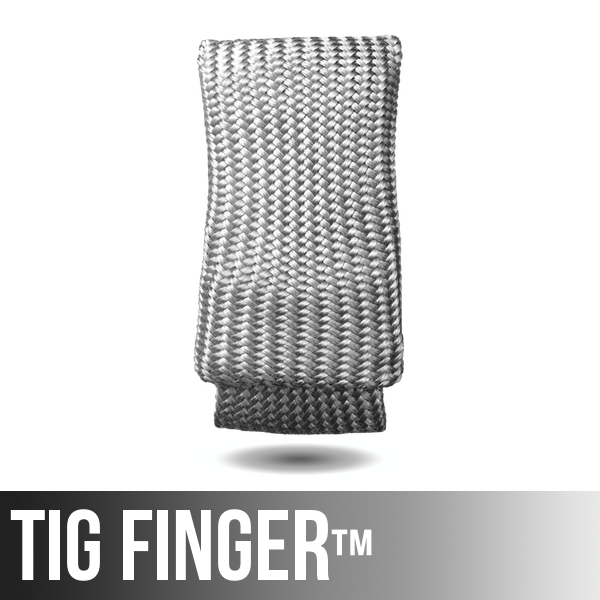Below are some products that I don’t carry, but I use them in my videos and can vouch for their quality.
WELDING MACHINES
Lincoln Viking 3350 w/4C
Lincoln Square Wave TIG 200
Lincoln Power MIG 210 MP
AHP Alpha TIG 200X
AHP Alpha 160ST
TOOLS AND ACCESSORIES
Lincoln TIG Gloves
Metabo WE15-150 Grinder
Milwaukee Band Saw
SWAG 4.0 Portaband Table
3M Respirator
BLUE DEMON FILLER METAL
er70S2
er308L
309L
er4043
er5356
er70S2
er308L
309L
er4043
er5356
Video Transcript:
Overhead Welding with 7018 and Dual Shield Flux Core
Overhead welding with 7018 stick rod as well as dual-shield flux-core. That’s what we’re talking about today. We’re gonna compare the two.
Got a piece of advice for ya, if you’re struggling with overhead stick welding with 7018.
Here it goes, set the machine hot enough to where when you hold a tight arc the rod won’t stick. Then hold a tight arc. Rod angle matters a lot too. I’m using here just a little more rod angle probably then I should. But shoot for just maybe 10 degrees drag and you should be okay. Hold as tight an arc as you can without just jamming it in there under the puddle. Man you really should almost feel the flux of that rod rubbing against the sides of the tee joint.
This rod angle’s a bit forgiving. I change my rod angle throughout the joint. I started out with kinda a drag and wound up with almost dead straight in. You can see here it changes as I go a little bit. I’m just getting some practice here, I’m a little rusty, definitely need some practice. I’m running a three pass, I didn’t get any arc shots of the second two. But we’ll cut and etch that later and see how it did.
Now for the dual-shield flux-core. This is .045 dual-shield E71T-1 quarter inch carbon steel. Your stick out here is what’s important and generally I guess somewhere around five-eighths to three-quarters of an inch stick it varies with different brands of different wire. But experiment a little bit and you’ll find the sweet spot.
I’m using a very slight drag motion here. And you can do a slight push, a slight drag, a dead straight in. I think that really as long as you don’t get carried away with gun angle you’ll be okay.
All right, I welded all four sides of this thing. Two of them with dual-shield and two of them with stick and we’re gonna do a really quick cut polish and etch here. Usually something to learn when you go to the trouble of testing a weld like this. And I learned I got some undercut right there. It’s hard to hide, and that’s on one of the stick welds right there. The dual-shield look a whole lot better.
It is super important to have the proper polarity when you’re doing dual-shield flux-core, or flux-core of any kind. Dual-shield flux-core typically requires reverse polarity, electrode positive. Self-shielded flux-cores typically require electrode negative, very important. The self-shielded kind will run like really horribly if you don’t have the right polarity. Dual-shield can sometimes can run okay and you wind up chasing your tail setting your wire feed speed and you never do quite get it right.
And ask me how I know? Because I spent about an hour today chasing my tail doing that very thing. I had a brain fart, hooked the polarity up wrong, I’m like “This isn’t running at all like it did the last time I on, I had it kinda dialed in. What’s up? Have I got moisture in my flux-core wire? Do I not have a good ground?” And all it was, was I had the polarity, I swapped it over. Things got about 100% better. I’ll show you the two different arcs from wrong polarity and the correct polarity right here.
The problem with the wrong polarity on some dual-shields is it can run okay, it’s not like horrible, but just can’t get it dialed in. It ran better on the pull, ran horrible on the push. All these big globs and balls, I just couldn’t get it to smooth out. I thought I had moisture in the wire or something. Here I changed the polarity, the pull smoothed out tremendously and the push is a whole lot better as well.
Something else I noticed on this cross section, you always learn something when go to the effort like this of doing a cut and etch. Look how much larger the single pass fillets are on the dual-shield as opposed to the 7018 single pass. Almost as big as the three pass weld.
I hope you can see that the dual-shield flux-core laid down a much larger single pass weld than the 7018 and it can be a lot more productive. So if you’re in business for yourself like my friend JD [Brewer 00:04:17], he uses dual-shield flux-core a lot when he’s doing hundreds of inches of you know, stair tread or something like that. It makes a bid difference in getting done.
All right, see you next time.







June 24, 2017 at 6:40 PM
Hi, Peter,
Self-shielded wires and dual-shield wires are different alloys, and the fluxes are different as well. Using a dual-shield wire without gas causes porosity just as with hard wire. Self-shielded wire run with gas interferes with the alloying in the joint, as the flux and it’s interaction with the air is part of the design.
July 7, 2017 at 8:07 PM
Thanks Steve.👍
June 21, 2017 at 2:44 AM
Hi Jody, another great video thanks.
Can you tell me, is the self shielding wire used for dual shield MIG just the normal self shielding wire?
Cheers, Peter.